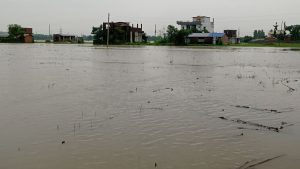
China’s Broken Promises: Nepal’s Northern Development Plan in Limbo
In a concerning turn of events, China’s commitment to aiding in the infrastructure development of Nepal’s northern region has come under scrutiny as it fails to fulfill its promises, leaving Nepal’s development plans in limbo.
Back in 2075 BS, the Chinese government inked a significant agreement with Nepal’s Ministry of Finance, pledging a substantial annual sum of 49 crores rupees to facilitate infrastructure development in Nepal’s northern reaches. This agreement, dubbed the “Northern Region Border Development Programme,” was poised to catalyze growth and prosperity in an area crucial for Nepal’s strategic and economic interests.
However, despite lofty assurances, China has yet to materialize its commitment, leaving Nepal in a precarious position. The repercussions of this inaction have been profound, with Nepal’s budgetary allocations for the program frozen, exacerbating the region’s already dire infrastructure deficit.
The envisioned program, designed to encompass 126 local levels across 15 districts bordering Tibet, held the promise of transformative development across multiple sectors including agriculture, education, healthcare, and transportation. Each local level was tasked with proposing projects amounting to a minimum of Rs. 5 crores, with China pledging a substantial contribution of 200 million RMB towards the initiative.
Despite Nepal’s proactive steps in formulating plans and soliciting cooperation, China’s response has been conspicuously lacking. Neither has China provided any formal communication regarding the aid nor has it offered clarity on the status of the pledged support. Citing reasons ranging from the COVID-19 pandemic to unspecified obstacles, China has failed to uphold its end of the agreement, leaving Nepal grappling with uncertainty and stalled progress.
The Ministry of Finance, tasked with overseeing the project’s implementation, remains in a state of flux as detailed project reports await approval. Per the agreement’s stipulations, the responsibility for project execution rests with construction companies selected by the Chinese government, adding another layer of complexity to an already convoluted situation.
The affected districts, spanning Darchula to Taplejung, find themselves caught in a web of bureaucratic inertia and geopolitical jockeying, with promises of development dangling tantalizingly out of reach. Despite Nepal’s proactive measures, including approvals from the Federal Affairs Ministry and local authorities, China’s reluctance to engage threatens to derail vital infrastructure projects and stifle economic progress.
As Nepal grapples with the fallout of China’s inaction, questions loom large over the future of bilateral cooperation and the fate of Nepal’s northern region. With the onus now on China to honor its commitments and reignite the stalled development agenda, the clock ticks ominously for a region in desperate need of progress and prosperity.















Comments